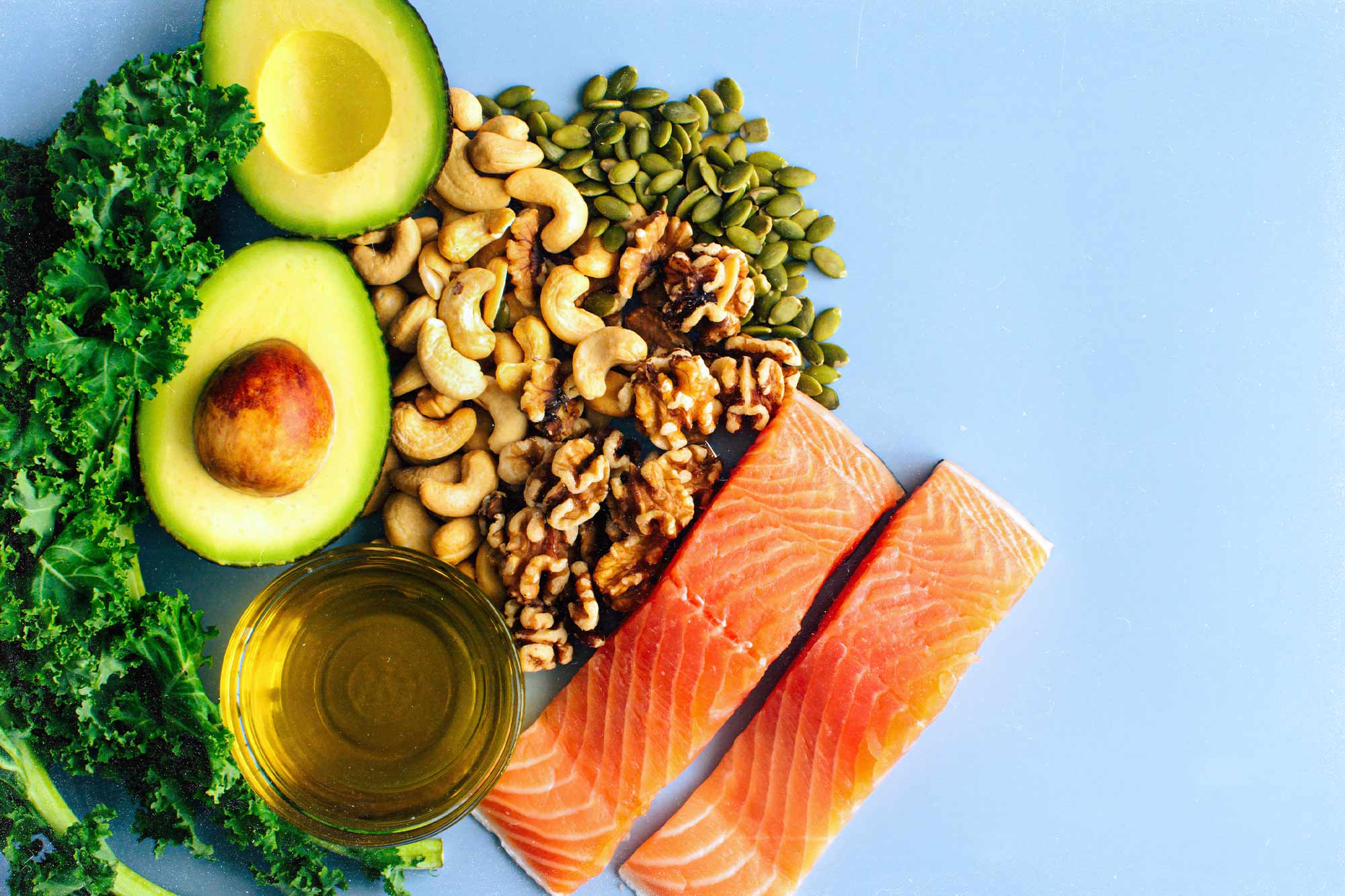Home>Training for Specific Goals>Weight Loss>Can Running Help In Burning Fat?


Weight Loss
Can Running Help In Burning Fat?
Published: February 22, 2024
Discover the impact of running on weight loss and fat burning. Learn how incorporating running into your routine can help you achieve your weight loss goals.
(Many of the links in this article redirect to a specific reviewed product. Your purchase of these products through affiliate links helps to generate commission for Therunningadvisor.com, at no extra cost. Learn more)
Table of Contents
The Benefits of Running for Weight Loss
Running is a highly effective and accessible form of exercise that offers numerous benefits for individuals seeking to lose weight. Incorporating running into your fitness routine can have a significant impact on your weight loss journey. Here are some of the key benefits of running for weight loss:
-
Calorie Burning: Running is a high-calorie-burning exercise that can help create a calorie deficit, which is essential for weight loss. The number of calories burned during a run depends on various factors such as speed, distance, and intensity. As a result, running regularly can contribute to the overall reduction of body fat.
-
Boosts Metabolism: Engaging in regular running can help boost your metabolism, leading to increased calorie expenditure even during periods of rest. This metabolic boost can support weight loss efforts by enhancing the body's ability to burn calories efficiently.
-
Enhances Cardiovascular Health: Running is a cardiovascular exercise that strengthens the heart and improves circulation. By enhancing cardiovascular health, running supports overall fitness and can contribute to weight management.
-
Builds Lean Muscle: Running engages multiple muscle groups, particularly in the lower body, including the quadriceps, hamstrings, and calves. Over time, this can lead to the development of lean muscle mass, which is important for increasing overall metabolic rate and supporting fat loss.
-
Mood Enhancement: Running has been shown to have positive effects on mental well-being by releasing endorphins, which can reduce stress and improve mood. This can be beneficial for individuals who may turn to food for emotional comfort, thereby supporting weight loss efforts.
-
Accessible and Cost-Effective: One of the greatest advantages of running is its accessibility. It can be done almost anywhere, requiring minimal equipment. This makes it a cost-effective and convenient option for individuals looking to incorporate physical activity into their weight loss journey.
-
Supports Long-Term Weight Maintenance: In addition to promoting weight loss, running can also play a crucial role in weight maintenance. By making running a regular part of your routine, you can establish a sustainable habit that supports long-term weight management.
Incorporating running into your weight loss plan can yield significant benefits, making it an effective and versatile exercise for individuals looking to shed excess body fat and improve overall health.
Read more: Can Running Help Reduce Anxiety?
How Running Helps in Burning Fat
Running is a dynamic and effective form of exercise that can significantly contribute to burning fat and promoting weight loss. Understanding how running facilitates fat burning can provide valuable insight into its role in achieving fitness goals. Here are the key mechanisms through which running helps in burning fat:
-
Calorie Expenditure: Running is a high-impact cardiovascular activity that expends a substantial number of calories. When the body requires energy for sustained physical exertion, it primarily relies on stored fat as a fuel source. As a result, regular running sessions can create a calorie deficit, prompting the body to tap into its fat reserves to meet the increased energy demands. This process is fundamental to fat burning and can lead to a reduction in overall body fat percentage over time.
-
Elevated Metabolic Rate: Engaging in running elevates the body's metabolic rate, leading to increased calorie expenditure even after the workout is completed. This phenomenon, known as excess post-exercise oxygen consumption (EPOC) or the afterburn effect, means that the body continues to burn calories at an accelerated rate during the recovery period following a run. This sustained calorie burn contributes to fat loss by enhancing overall energy expenditure.
-
Muscle Engagement: Running engages a multitude of muscle groups, particularly in the lower body, including the quadriceps, hamstrings, glutes, and calves. The repetitive contractions of these muscles during running not only enhance muscular endurance and strength but also contribute to the development of lean muscle mass. As muscle tissue is metabolically active, the presence of lean muscle can elevate the body's basal metabolic rate, leading to increased calorie burn at rest and supporting fat loss efforts.
-
Hormonal Regulation: Running has been shown to positively influence hormone regulation, particularly with regard to insulin sensitivity and the release of hormones such as adrenaline and cortisol. Improved insulin sensitivity can facilitate the body's ability to efficiently utilize glucose, potentially reducing the likelihood of excess glucose being stored as fat. Furthermore, the release of adrenaline and cortisol during running can promote the breakdown of fat stores for energy, further contributing to fat burning.
-
Targeted Fat Loss: While spot reduction is not a viable concept, regular running can contribute to overall fat loss, including in stubborn areas such as the abdominal region. As the body utilizes fat stores for energy during running, it can lead to a reduction in visceral and subcutaneous fat, ultimately contributing to a leaner physique.
Incorporating running into a comprehensive fitness regimen can harness these fat-burning mechanisms, making it an invaluable component of a weight loss strategy. By understanding the physiological processes through which running promotes fat burning, individuals can optimize their approach to achieving their fitness and weight loss goals.
Tips for Effective Fat-Burning Running Workouts
When aiming to maximize fat burning through running, incorporating strategic approaches into your workouts can significantly enhance the effectiveness of your efforts. Here are essential tips for optimizing fat-burning running workouts:
-
Interval Training: Integrate interval training into your running routine to elevate fat burning. Alternating between periods of high-intensity running and active recovery prompts the body to tap into fat stores for energy. This approach not only boosts calorie expenditure during the workout but also enhances the afterburn effect, leading to continued fat burning post-exercise.
-
Progressive Overload: Gradually increase the intensity and duration of your runs to continually challenge your body. By progressively overloading the muscles and cardiovascular system, you can stimulate greater fat burning and improve overall fitness. This can be achieved by incorporating longer runs, faster paces, or more challenging terrains over time.
-
Incorporate Hills: Running uphill engages additional muscle groups and elevates heart rate, leading to enhanced calorie burn and fat utilization. Including hill sprints or hill repeats in your running workouts can effectively boost fat-burning potential while adding variety and intensity to your routine.
-
Strength Training: Supplement your running regimen with strength training exercises to build lean muscle mass. Increased muscle mass elevates the body's basal metabolic rate, leading to greater calorie burn at rest. Additionally, strength training enhances overall muscular endurance, supporting improved running performance and fat utilization.
-
Mindful Nutrition: Pay attention to your nutritional intake, particularly before and after running sessions. Consuming a balanced meal or snack containing carbohydrates and protein before a run can provide the necessary energy for optimal performance. Post-run, refueling with nutrient-dense foods supports muscle recovery and overall metabolic function, contributing to sustained fat burning.
-
Consistency and Variety: Maintain a consistent running schedule while incorporating variety in your workouts. Consistency is key to achieving fat-burning goals, while varying the intensity, duration, and terrain of your runs prevents plateaus and stimulates continuous adaptation, leading to enhanced fat utilization.
-
Proper Hydration: Adequate hydration is crucial for optimizing fat metabolism during running. Ensure that you are well-hydrated before, during, and after your runs to support efficient energy utilization and overall performance. Proper hydration also aids in the transportation of nutrients to muscles, facilitating fat burning and recovery.
-
Rest and Recovery: Allow sufficient time for rest and recovery between intense running sessions. Adequate rest supports muscle repair and growth, optimizing fat-burning potential. Additionally, prioritizing quality sleep is essential for hormonal balance and overall metabolic function, further contributing to effective fat burning.
By implementing these tips, you can elevate the fat-burning potential of your running workouts, leading to enhanced weight loss and improved overall fitness. Incorporating these strategies into your routine can optimize the physiological processes involved in fat metabolism, supporting your journey towards a healthier and leaner body.
Incorporating Running into Your Weight Loss Plan
Incorporating running into your weight loss plan can be a transformative decision that propels you towards your fitness goals. Whether you are embarking on a weight loss journey or seeking to enhance your current regimen, integrating running as a core component of your plan can yield significant benefits. Here's how you can seamlessly infuse running into your weight loss strategy:
Setting Realistic Goals
Before integrating running into your weight loss plan, it's essential to establish realistic and achievable goals. Whether your objective is to shed a specific amount of weight, improve cardiovascular fitness, or enhance overall well-being, defining clear and attainable targets provides a roadmap for your running endeavors.
Creating a Structured Running Schedule
Developing a structured running schedule ensures consistency and progression in your weight loss plan. Start by determining the frequency and duration of your runs, gradually building up your endurance and mileage over time. By incorporating regular running sessions into your weekly routine, you can create a sustainable habit that supports your weight loss efforts.
Balancing Running with Other Exercises
While running can be a powerful catalyst for weight loss, incorporating a diverse range of exercises can optimize your overall fitness and enhance the effectiveness of your weight loss plan. Integrating strength training, flexibility exercises, and cross-training activities alongside running can promote muscular balance, prevent injury, and contribute to a comprehensive approach to weight management.
Monitoring Progress and Adjusting Accordingly
Tracking your running performance and weight loss progress is crucial for evaluating the effectiveness of your plan. Utilize tools such as running apps, fitness trackers, or a simple journal to monitor your running metrics, including distance, pace, and perceived exertion. Additionally, regularly assess your body composition and overall well-being to make informed adjustments to your running routine and weight loss plan.
Embracing Nutritious Eating Habits
Incorporating running into your weight loss plan necessitates attention to your nutritional intake. Fueling your body with a balanced and wholesome diet rich in lean proteins, complex carbohydrates, and essential nutrients supports your running performance and facilitates effective weight management. Prioritize nutrient-dense foods that nourish your body and complement your running endeavors.
Seeking Support and Accountability
Embarking on a weight loss journey that incorporates running can be enhanced by seeking support and accountability. Engage with like-minded individuals, join running groups, or enlist the guidance of a fitness coach or mentor to foster motivation and accountability. Sharing your progress, challenges, and triumphs with a supportive community can bolster your commitment to your weight loss plan.
By integrating these strategies, you can seamlessly infuse running into your weight loss plan, harnessing its transformative potential to propel you towards your fitness goals. Running not only contributes to calorie burning and fat loss but also fosters a holistic approach to health and well-being, making it a valuable cornerstone of your weight loss journey.
Potential Drawbacks of Relying Solely on Running for Fat Loss
While running can be an effective tool for fat loss, relying solely on this form of exercise for weight management may present certain drawbacks that warrant consideration. Understanding the potential limitations of exclusively relying on running for fat loss is essential for devising a well-rounded and sustainable approach to achieving your fitness goals.
Risk of Overuse Injuries
Engaging in repetitive high-impact activity, such as running, can increase the risk of overuse injuries, particularly in the lower body. Conditions such as shin splints, stress fractures, and tendonitis may arise from the repetitive stress placed on the muscles and joints during running. Overuse injuries can impede training consistency and lead to prolonged periods of inactivity, hindering fat loss progress.
Limited Muscular Development
While running primarily engages the lower body muscles, it may not comprehensively address the need for overall muscular development. Neglecting strength training and resistance exercises can result in imbalanced muscular development, potentially leading to a plateau in fat loss. Incorporating strength training is crucial for building lean muscle mass, which contributes to an elevated basal metabolic rate and enhanced fat-burning potential.
Potential Plateaus in Fat Loss
Over time, the body may adapt to the repetitive nature of running, leading to a potential plateau in fat loss. Without sufficient variation in training stimuli, the body's response to running may diminish, resulting in a reduced calorie burn and fat loss efficacy. Introducing diverse forms of exercise and training modalities can prevent plateaus and stimulate continuous progress in fat loss efforts.
Impact on Appetite Regulation
Intensive running sessions may trigger an increase in appetite, leading to heightened food consumption. This can potentially offset the calorie deficit created by running, impeding fat loss progress. Moreover, the psychological perception of "rewarding" oneself after a challenging run with indulgent food choices can counteract the calorie expenditure achieved during the workout, hindering overall fat loss.
Potential Mental and Physical Fatigue
Excessive reliance on running as the primary form of exercise for fat loss can lead to mental and physical fatigue. The repetitive nature of running may contribute to monotony and mental burnout, impacting motivation and adherence to the exercise regimen. Additionally, prolonged high-impact running without adequate recovery may lead to physical fatigue and increased risk of burnout or injury.
Lack of Comprehensive Fitness Development
While running offers cardiovascular benefits and calorie expenditure, it may not comprehensively address other components of fitness such as flexibility, agility, and upper body strength. Neglecting these aspects of fitness can limit overall physical development and functional capacity, potentially impacting long-term health and well-being.
Incorporating a diverse range of exercises and activities alongside running can mitigate these potential drawbacks, fostering a holistic approach to fat loss and overall fitness. By addressing the limitations of relying solely on running for fat loss, individuals can optimize their weight management strategy and cultivate a balanced and sustainable approach to achieving their fitness goals.













